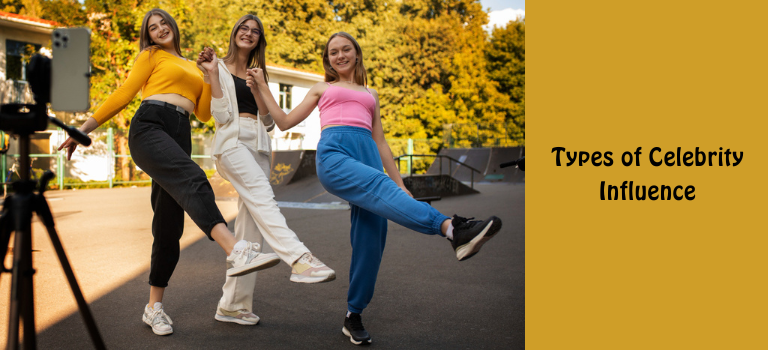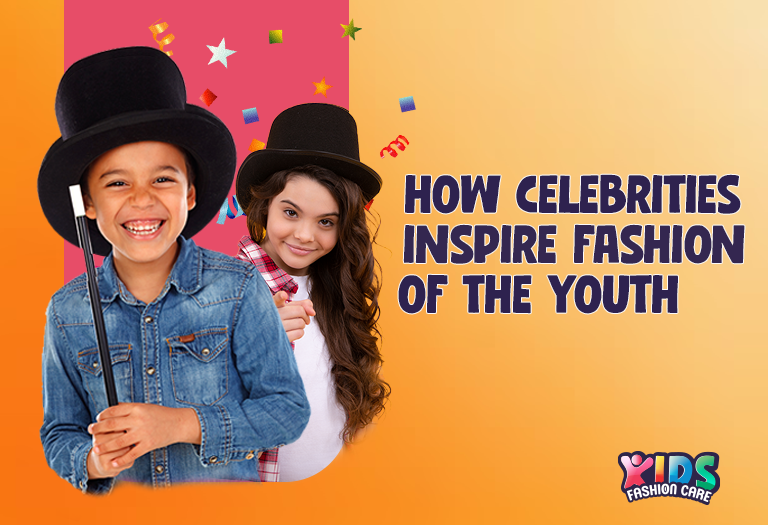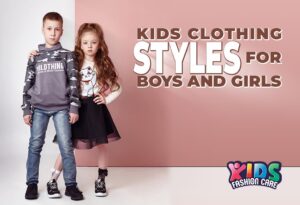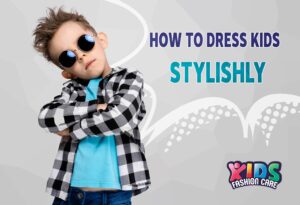Celebrities exhibit fashion trends with their attire and appear as the ideal standard, thus they inspire and charm young people through their creative looks, appearance, hairstyles, clothes, body image, shoes & accessories— with everything. They appear in those looks in different red carpet shows, award ceremonies, brand collaboration programs, etc.
Table of Contents
Introductions
Celebrities are another name for iconic iconic looks. They influence teens all over the world not only with their performances but also with the strong visuals they exhibit in different functions. This works as a guide for the fashion-conscious young generation who are subconsciously aware of their appearances, as they grow up. In this article, let’s explore how celebrities inspire fashion of the youth.
How Celebrities Inspire Fashion of The Youth and Why It Matters?

Celebrities can sway teens in different ways, from their minds, attitudes, behaviors, aspirations, mental, ways of eating, manners teaching, to dressing up, both positively and negatively. Here are those listed.
Positive influences
- Celebrities are role models: Children look up to celebrities and follow them for a long time, they subconsciously learn many things from their favorite celebrities, not only certain fashion trends. They buy what celebrities wear or use, from different events to daily life usage.
- Learning positivity: Many celebrities can help youth learn positivity. Such as by learning and following them, they learn about their values, habits, and ways how they deal with things in critical moments, which these people are greatly aware of.
- Eating habit formation: Teens who are picky eaters can learn from their favorite celebrities how to eat healthy and stay fit.
- Teaching moral values: Media persons hold the power to move teenage minds, their active participation in humanitarian activities, and involvement in different development-related projects will help teenagers learn about different positive values.
Negative influences
- Adopting negativity: Some celebrities are very aware of their general public image, but other celebrities are capricious. They have scandals, or are rude to the camera, not caring that is detrimental to the young minds.
- Body consciousness: To stay fit for the role, celebrities maintain a hard diet plan. This body image comparison creates low self-esteem among teens and leads to unhealthy food habits, eating disorders, or dissatisfaction with the body.
- Exhibit a flawless life: Through social media messages, posts, and live streams, celebrities portray a flawless, trouble-free, perfect life. This creates inner conflict and evokes feelings like inadequacy and anxiety.
- Consumerism: As such people are often endorsed by different designer brands, their followers naturally feel the necessity to buy those items in sake for their idol. This creates an unwanted financial issue and peer pressure.
Why does it matter?
Teenagers are at a confusing age, neither toddlers nor grown-ups, they are in the middle of an identity crisis. So, what they look for is validation, and support but in a way that doesn’t pose a threat to their self-esteem.
That’s where the role of celebrities comes in. They help develop youth identities, that society accepts and approves of. It can start from learning positive humane values to adopting celebrity fashion trends and daily life activities. By following them, young people can understand social norms, cultural differences, and moral responsibilities.
Types of Celebrity Influence

Based on categories, young people are one of the biggest follower groups for celebrities, who are developing emotionally. The influence works them on different levels, from dressing up, and ways of speaking, to behaving, and many more ways. Let’s check the types of celebrity influences.
Iconic fashion
Celebrities are the emblem of iconic looks in the fashion industry, which are mostly shown in attention-grabbing functions like the red carpet, different award shows, etc where many other celebrities join. To adopt a magnificent look, they style up from their hairstyle, and ornaments to their clothes and shoes.
Online business growth
Social influencers are expanding the fashion industry through social media platforms such as Facebook, TikTok, YouTube, etc. They display clothes and share style tips, make-up products, and accessories that celebrities use, which has a big target audience.
Brand collaboration
Renowned fashion brands approach celebrities to promote their products so that the followers of that celebrity follow the brand as well. It can be simply business, the brands want to create awareness or to use a certain method of positivity (sustainability, carbon reduction, etc).
Athlete endorsement
Sportswear brands endorse athletes especially soccer and basketball players, to display their activewear. It creates another influence among the children, as they can see their favorite celebs in an off-camera casual look.
Artificial character influence
Humans are not the only celebrities. There are fictional characters as well, that have also become celebrities and thus have fanbases as well, such as the Barbie doll. Almost every hairstyle, clothing, look, and different accessory has been widely popular, capturing the attention of girls.
Enhance knowledge of fashion
As celebrities are often endorsed or sponsored by different clothing, footwear, or accessories brands, which they wear at different events, campaigns, or advertisements, young people who are interested in fashion can learn and dig deeper about it.
Involvement in charitable activities
Many celebrities are involved in humanitarian and charitable activities, which inspire the young generation (children, teens, and youth) to take part in activities that are done for the greater good and will be helpful to people who are deprived.
Psychological Aspects
- Celebrities are used to a rigorous diet, which is why they look evergreen even after they age. Many teens unconsciously compare themselves to body structure, clothes, freedom, etc. They try to copy their behavior, appearance, and lifestyle.
- Many become delusional and develop one-sided parasocial relationships. They feel closer to them and start to imitate themselves having a real connection, though not having any real-life interaction. It greatly affects them psychologically.
- Oftentimes, following celebrities creates a self-centered obsession. Many fans feel that the celebrity personality only belongs to him/her, and no one else can follow, which may lead to behavior such as interfering with celebrities’ private lives.
- Famous people’s behavior, attitudes, way of talking, etc affect youth’s perception.
- Being a part of other fans, youth feel connected, excited, admired, and a sense of belonging. Thus they learn about diversity in countries, races, and regions, and accept variations.
- As young people go through cognitive development, they can decipher what media is trying to pose, celebrities’ messages, or the tactics of endorsement or marketing, etc.
Power of Media’s Role

Media is a powerful boon and bane of the time, using both online and offline platforms, from billboards, posters, and magazines, to television, videos, and social platforms. Within a short time, the media can hype a celebrity positively or negatively.
Living in the 21st century, we can see how accessible everything has become. Everyone owns an electronic device, even minors. If they want to learn about celebrities, all they have to do is to search. So, the media play a great role in promoting celebrities and influencing young adults. Let’s see how.
- A marketing tool: Media works on promoting celebrities’ advertisements, their endorsements, activities they are doing, or events they are participating in. Also, brands that endorse celebrities are resourcing their target audience, and consumer behavior through media.
- Easily findable in social media: These days, every teenager is active on social media platforms, either one or another. And celebrities have their verified social pages on almost each of them, so, curious teens can easily look them up.
- False news publication: Simple news from any media can cause a stir, put someone at the peak of people’s admiration, or throw them into the pitfall of the public eye. This is what yellow journalism does, publish news without verifying much or knowing little truth. It affects not only a celebrity’s social life and changes the public’s perspective. It also affects their minor fans psychologically as well.
- Favoritism: Sometimes, media may show favoritism to some celebrities, due to their background, or history. As a result, other talented media persons do not get the attention or focus they deserve for working hard, which frustrates their fans and thus this situation creates and instigates fan wars.
Parental and Educational Involvement
Celebrities create trends. Due to their professions, they have to always show a glamorous look in front of the camera, and change it as required. The work to beautify them lies upon a designated team, that invests time to make these media persons look best.
Children following their favorite media personalities blindly has created concerns for parents. They think that—
- As they are celebrities, their looks are a topmost priority for society and the media. It is true though.
- Some celebs have wild lifestyles, and exposure to this may lead young children astray or be devastated.
- Following a celebrity gradually develops the eagerness to own more things they use, which creates a financial burden for parents.
- Their fashion may harm kids and teens psychologically, as they start comparing themselves, follow eating habits, and learn inappropriate dress-ups. Thus everything starts to get affected.
I understand your concern. Following celebrities will open up their vision to learn about the fashion industry. But you want to limit the consumption of their celeb’s favoritism. My first recommendation is to not force them against but rather limit the likeness to celebrities as part of something enjoyable.
The right parent and educational involvement will help teens rationalize the differences between their infatuations and their need for fashionable items. Here is how you can do that.
- Follow the celebrities your children like on social media, so that you can keep in check if your kids are learning positivity or negativity.
- Whenever you have contradicting opinions with your children about any celebrity fashion, don’t turn it into bitter, rather make it like a debate, discuss what is right and wrong and why. Understand their points and describe yours so that it ends on a good note.
- Stick to strong family values, ethics, and country differences from an early age. So, it becomes apparent to the teens if any particular style is appropriate for them or not.
- Educate them about technological advancements. Celeb photos are mostly photoshopped, and filtered to make them look younger, have flawless skin, attractive than natural.
- Start self-acceptance among children. They should be happy with their look, body, age, skin tone, etc, no matter what others say. They don’t need to become the copycat of celebrities.
- Teach them sponsorship, and how it works. Then tell them that what those famous people wear is mostly sponsored, with no connection with what they wear in their house.
Frequently Asked Questions (FAQs)
Question: Which celebrities have the most influence on children?
Answer: Sports stars, singers, and action movie heroes are the celebrities who have the most influence on them.
Question: How do celebrities tend to influence young girls?
Answer: Young girls are attracted by the beauty, body image, hairstyles, clothing, and accessories styles of other women celebrities.
Question: How do celebrities influence boys?
Answer: Boys are attracted by fashion, bodies built by working out, etc.
Question: What celebrity is a good influence?
Answer: Celebrities whose influences are on the greater good (such as education, nutritious food access for everyone), protecting vulnerable communities, working to raise awareness to protect the environment, stopping indiscriminate war, or prohibitions of weapons or others are called having a good influence.
Question: Why do people admire celebrities?
Answer: Celebrities display a perfect life, including all types of positivity with glamor, fame, luxury, and success. That’s why people idolize and admire celebrities.
Conclusion
Celebrities are cultural influencers and are everywhere. Children following them isn’t a problem, as long as it isn’t affecting them negatively. Parents should stay aware of their children’s healthy and unhealthy passions and nurture them accordingly. So, the influence becomes a good one for them.






